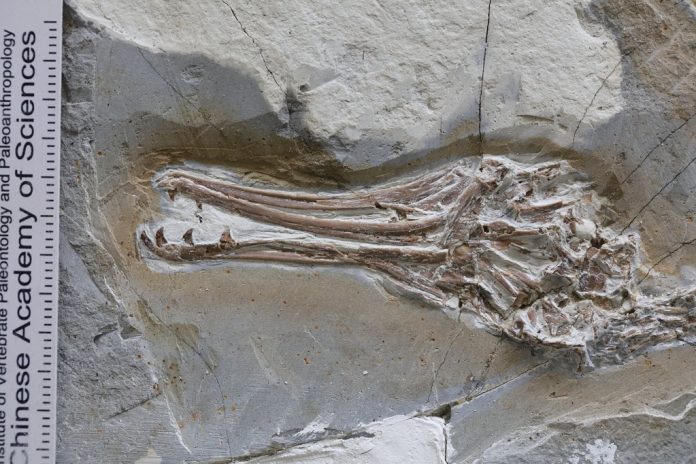
Scientists have made an exciting discovery that changes what we know about some of the earliest birds.
Fossils found in China show that a bird species called Longipteryx chaoyangensis, which lived 120 million years ago, ate fruit, not fish as previously believed.
This finding helps researchers better understand how these ancient birds lived and what they ate.
Paleontologists, who study ancient life through fossils, often find it difficult to know for sure what an animal ate or how it behaved.
Fossils of bones can offer clues, but they don’t always tell the full story. However, the discovery of fossilized seeds inside the stomachs of Longipteryx specimens gives solid proof that these birds were eating fruit.
This important discovery was made by a team of researchers led by Jingmai O’Connor, an expert in fossil reptiles at the Field Museum in Chicago. The study was published in Current Biology.
When Longipteryx was first discovered in 2000, its long skull and sharp teeth led scientists to think it hunted fish, like modern-day kingfishers.
But O’Connor and other researchers started to question this idea, especially because fish-eating birds usually have teeth all along their beaks, while Longipteryx only had teeth at the tip of its beak.
The key breakthrough came when O’Connor visited a museum in China and noticed two Longipteryx fossils that had something unusual in their stomachs. She asked paleobotanist Fabiany Herrera to examine the fossils, and he confirmed that the tiny round objects in the birds’ stomachs were actually seeds from ancient fruits. These fruits came from gymnosperms, a type of tree related to today’s conifers and ginkgo trees.
This discovery reveals that Longipteryx ate fruit, which means it probably had a more varied diet. During times when fruits weren’t available, the bird likely ate other things, like insects. This new information challenges the old idea that Longipteryx was a fish eater.
What were the teeth really for?
While the discovery of seeds in Longipteryx’s stomach helps explain its diet, it also raises new questions. If the bird wasn’t hunting fish, why did it have such strong teeth?
The researchers think the bird’s teeth might have been used as weapons for fighting, not for catching prey.
Some modern birds, like hummingbirds, have sharp beak structures they use to fight with each other. O’Connor and her colleague Alex Clark suggest that Longipteryx may have used its long beak and strong teeth to compete with other birds for food or mates.
This discovery is important because it shows that skeletal traits alone don’t always give a complete picture of how ancient animals lived.
Scientists hope this study will encourage more research into the behaviors of early birds, helping us better understand their lives beyond just what they ate.



